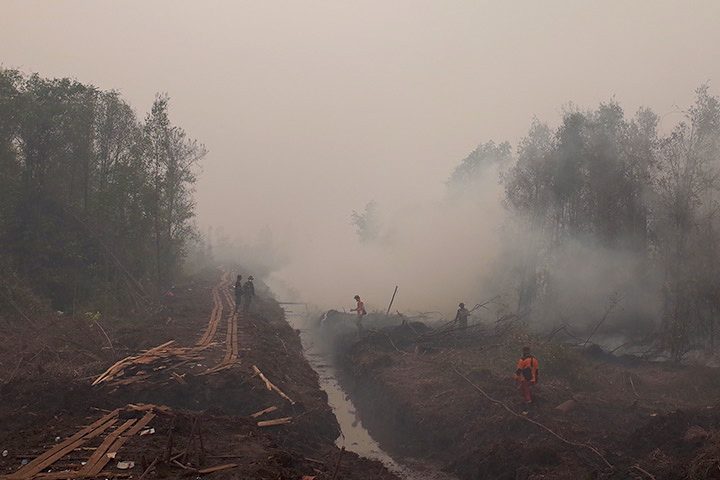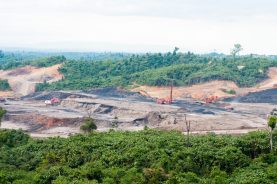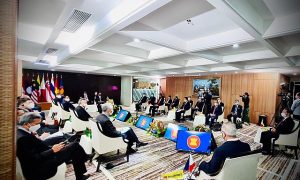At their 48th session, the UN Human Rights Council in 2021 recognised a standalone human right to a safe, clean, healthy and sustainable environment, representing a major development in international human rights law. Yet, for many countries in Southeast Asia, including Thailand, the Philippines and Indonesia, environmental human rights have long been enshrined in their Constitutions and laws. But these nations’ extractive industries have had significant impacts on how the norm is upheld. The differing human rights regimes in these countries highlight the importance of protecting the procedural elements of the right to a healthy environment, such as access to courts, to ensure the substantive right is achieved in practice not just on paper.
According to the UN Food and Agriculture Organisation, in all three countries over 50% of people generate income from the agricultural sector. Communities are strongly connected to their local environments, they live and earn by the integrity of the ecosystems around them, and are strongly incentivised to fight for environmental conservation. Indigenous peoples in all three nations maintain deep connections to their lands, and manage vast swathes of biodiversity rich forests.
Native oligarchs and unscrupulous security apparatuses from the police to the military continue to exploit natural resources with ease and impunity.
Environmental degradation in Indonesia: lessons from Jambi
Religion, culture and history also elevate ecological concerns. In Thai Buddhism, trees are sacred – some belong to local ancestral spirits (puta) whilst others are believed to contain divine entities like Mae Tani. Similarly in Indonesian Islam, some local Islamic institutions reject Western capitalism because it corrodes man’s fundamental responsibility to protect nature, as entrusted by God. Democratisation has also had an influence, with the Philippines protecting a suite of human rights (including the right to a balanced and healthful ecology) in their 1986 Freedom Constitution. This Constitution was drafted as a result of the People Power revolution in 1986, and—like many transitional democracies at the time—was incredibly ambitious in restructuring systems of political power to address economic inequalities and environmental degradation.
The right to a healthy environment in law
History, culture and religion have informed the constitutional and legislative reforms in all three countries, with each nation explicitly protecting the right to a healthy environment. Express and comprehensive recognition is critical because the human right to a healthy environment is multi-faceted, with both procedural and substantive dimensions. The procedural dimensions of the right, such as ensuring public access to environmental information and the courts, allows people to enforce their human rights. The substantive dimension of the right is what communities are seeking to protect, including freedom from toxic environments and a safe climate. Both components are essential. The substantive element serves as a vision for the healthy environment that we all need to flourish, whilst the procedural elements create a pathway for us to move towards that vision.
In the Indonesian Constitution, article 28h(1) states that every person shall “have the right to life…and to enjoy a good and healthy environment”. This high-level statement is affirmed by Indonesian laws like the Law on Environmental Protection and Management (2009), which grants procedural rights for the public to make submissions about the activities that have the potential to harm the environment.
Thailand’s 2017 Constitution recognises the right to a healthy environment in two sections. First, section 43(2) enshrines people’s rights to “manage, maintain and utilise natural resources, [the] environment and biodiversity”. Second, section 57(2) imposes obligations on the Thai state to “conserve…and use or arrange for utilisation of natural resources, [the] environment and biodiversity”. Thailand has implemented an environmental impact assessment framework for the achievement of these aspirations under its Enhancement and Conservation of the National Environmental Quality Act (2018).
Finally, the Philippines protects the right to a healthy environment in its Constitution (outlined above) and has enacted legislation to protect environmental rights in the context of developments, pollution and climate change. The Philippines was also noted in a report of the UN Special Rapporteur on Human Rights and the Environment for its best practice provision of environmental information to its people.
But the vision of a safe and healthy environment for people in Southeast Asia is being degraded by rapidly expanding extractivist industries. In all three countries, liberalisation of the mining sector has led to an explosion of (often foreign-owned) mining ventures, and an escalation in human rights abuses. Indonesia is one of the deadliest countries in the Southeast Asian region for environmental defenders. Across the South China Sea, Indigenous peoples and local communities in the Philippines are too often displaced by mining-related environmental devastation. Thailand is no exception, with poor government regulation contributing to unsustainable deforestation (for the benefit of large open-cut mines). All three countries are also rated as vulnerable to climate change impacts, but the growing coal industry threatens progress towards each nation’s Paris Agreement targets.
Black gold, fool’s gold and the fight for the treasures of a healthy environment
The extractivist industry is closely tied to political leaders and business oligarchs, and they have certainly asserted influence over reforms to development processes in all three countries. For example, Thailand passed laws in 2014 to enable mining companies to access land without adequate environmental mitigation and Indonesia has revoked the protected environmental status of biodiverse-rich areas for the benefit of major developers.
So, for many Indigenous peoples and environmental activists, the procedural components of the right to a healthy environment have become essential for the protection of substantive environmental rights. Of most importance is adequate access to the courts.
In both Thailand and the Philippines, courts have been willing to interpret the right to a healthy environment expansively. Thai courts have repeatedly held mining companies to account for environmental degradation, for example awarding compensation to 22 villagers who experienced environmental harm from lead contamination. Similarly, the Supreme Court of the Philippines has developed world-leading jurisprudence on the right to a healthy environment, outlining that the Philippines government is obligated to conserve a healthy environment for Filipinos in the state’s capacity as parens patriae (Latin for “parent of the nation”).
Unfortunately, Indonesia is an outlier in this regard. Despite sharing many of the legal dimensions of the right to a healthy environment, Indonesian courts have not followed the Thai or Filipino approach and have largely underutilised the right in jurisprudence. Indeed, Indonesia’s court system is not designed to facilitate environmental human rights cases, as the country’s Human Rights Court does not have jurisdiction to hear alleged environmental human rights abuses. The reluctance of Indonesian courts to engage with the right to a healthy environment is a product of a lack of judicial specialist knowledge and the black-letter approach to Constitutional law employed by Indonesian courts. But such barriers are not absolute, and can be addressed. For example, Thailand has established a specialist environmental division in the court system to facilitate environmental public interest cases.
The differing experiences of Indonesia, Thailand and the Philippines offer valuable lessons in the era of globalised extractivism, accelerating climate change and the struggle for human rights. While all three countries aspire to protect the right to a healthy environment, experience on the ground highlights that it falls to local communities and activists to assert the right in practice. In jurisdictions where court access is encouraged, the right to a healthy environment flourishes in practice not just on paper. We are all striving for a vision of environmental justice, but the procedural elements of our rights are what allow us to chart a pathway to progress.
 Facebook
Facebook  Twitter
Twitter  Soundcloud
Soundcloud  Youtube
Youtube  Rss
Rss 



